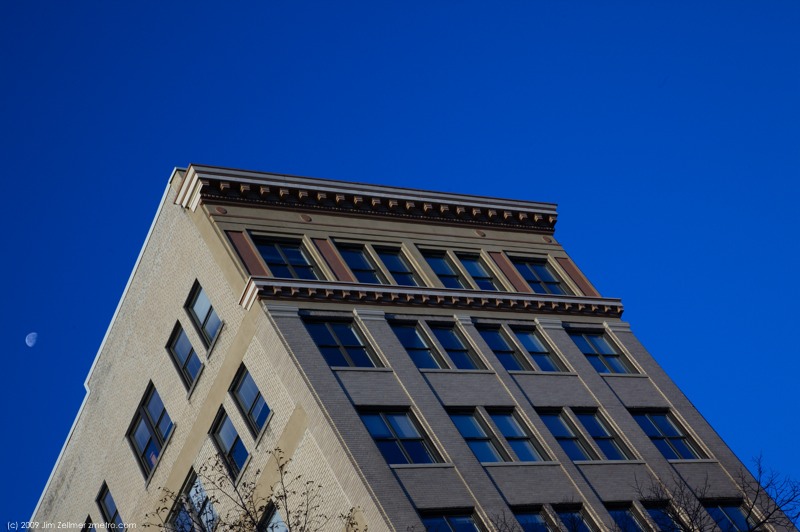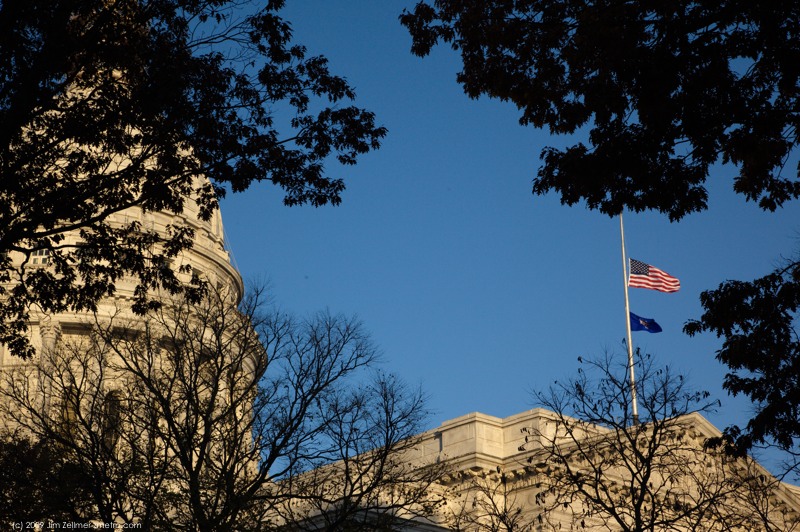
Buffett’s Betrayal….
When I was 14, Warren Buffett wrote me a letter.
It was a response to one I’d sent him, pitching an investment idea. For a kid interested in learning stocks, Buffett was a great role model. His investing style — diligent security analysis, finding competent management, patience — was immediately appealing.
Buffett was kind enough to respond to my letter, thanking me for it and inviting me to his company’s annual meeting. I was hooked. Today, Buffett remains famous for investing The Right Way. He even has a television cartoon in the works, which will groom the next generation of acolytes.
But it turns out much of the story is fiction. A good chunk of his fortune is dependent on taxpayer largess. Were it not for government bailouts, for which Buffett lobbied hard, many of his company’s stock holdings would have been wiped out.
Berkshire Hathaway, in which Buffett owns 27 percent, according to a recent proxy filing, has more than $26 billion invested in eight financial companies that have received bailout money. The TARP at one point had nearly $100 billion invested in these companies and, according to new data released by Thomson Reuters, FDIC backs more than $130 billion of their debt.
To put that in perspective, 75 percent of the debt these companies have issued since late November has come with a federal guarantee. (Click chart to enlarge in new window)
A Glorious November Saturday

German Chancellor Angela Merkel Address to Joint Meeting of Congress
Twenty-years after the fall of the Berlin Wall, German Chancellor Angela Merkel addressed a joint meeting of Congress to discuss issues around the world including Afghanistan, climate change and int’l financial regulation.
‘Puzzlers’ reassemble shredded Stasi files, bit by bit
East German documents provide a crucial piece of history, supporters of the project say, but putting them back together could take hundreds of years. A computerized system would help, but it’s costly.
Reporting from Berlin and Zirndorf, Germany, – Martina Metzler peers at the piles of paper strips spread across four desks in her office. Seeing two jagged edges that match, her eyes light up and she tapes them together.
“Another join, another small success,” she says with a wry smile — even though at least two-thirds of the sheet is still missing.
Metzler, 45, is a “puzzler,” one of a team of eight government workers that has attempted for the last 14 years to manually restore documents hurriedly shredded by East Germany’s secret police, or Stasi, in the dying days of one of the Soviet bloc’s most repressive regimes.
Two decades after the heady days when crowds danced atop the Berlin Wall, Germany has reunited and many of its people have moved on. But historians say it is important to establish the truth of the Communist era, and the work of the puzzlers has unmasked prominent figures in the former East Germany as Stasi agents. In addition, about 100,000 people annually apply to see their own files.
The Inside Story of Wal-Mart’s Hacker Attack
Wal-Mart was the victim of a serious security breach in 2005 and 2006 in which hackers targeted the development team in charge of the chain’s point-of-sale system and siphoned source code and other sensitive data to a computer in Eastern Europe, Wired.com has learned.
Internal documents reveal for the first time that the nation’s largest retailer was among the earliest targets of a wave of cyberattacks that went after the bank-card processing systems of brick-and-mortar stores around the United States beginning in 2005. The details of the breach, and the company’s challenges in reconstructing what happened, shed new light on the vulnerable state of retail security at the time, despite card-processing security standards that had been in place since 2001.
In response to inquiries from Wired.com, the company acknowledged the hack attack, which it calls an “internal issue.” Because no sensitive customer data was stolen, Wal-Mart had no obligation to disclose the breach publicly.
Wal-Mart had a number of security vulnerabilities at the time of the attack, according to internal security assessments seen by Wired.com, and acknowledged as genuine by Wal-Mart. For example, at least four years’ worth of customer purchasing data, including names, card numbers and expiration dates, were housed on company networks in unencrypted form. Wal-Mart says it was in the process of dramatically improving the security of its transaction data, and in 2006 began encrypting the credit card numbers and other customer information, and making other important security changes.
“Wal-Mart … really made every effort to segregate the data, to make separate networks, to encrypt it fully from start to finish through the transmission, ” says Wal-Mart’s Chief Privacy Officer Zoe Strickland. “And not just in one area but across the different uses of credit card systems.”
Wal-Mart uncovered the breach in November 2006, after a fortuitous server crash led administrators to a password-cracking tool that had been surreptitiously installed on one of its servers. Wal-Mart’s initial probe traced the intrusion to a compromised VPN account, and from there to a computer in Minsk, Belarus.
The Best Summary (to date) of Taxpayer Funded Events that Lead to Goldman Sachs’ Survival and Recent Large Payouts
A few weeks ago, shortly after Goldman Sachs reported its latest blowout quarter, the firm’s chief executive, Lloyd Blankfein, spoke at a Fortune magazine breakfast.
In normal times, Mr. Blankfein might have been forgiven for bragging a bit about the just-reported quarter — over $3 billion in profit on $12 billion in revenue. It had generated some $6 billion just in one division: fixed income. It had more than $160 billion in cash or cash equivalents on its balance sheet. And of course it had long since repaid, with interest, the $10 billion it had accepted from the Treasury Department during the darkest days of the crisis.
But of course those weren’t the numbers the media and the public had focused on in the wake of Goldman’s earnings. Instead, people were fixated on the $5.3 billion the firm had set aside for its executives’ year-end bonuses. Added to first and second quarter set-asides of $4.6 billion and $6.6 billion, the firm had put aside $16 billion so far this year for employee bonuses. Nearly 50 percent of the firm’s revenue was going toward compensation. And there was still one more quarter to go!
Was it fair, commentators kept asking, that barely a year after the taxpayers had essentially saved the financial system, this firm that took government capital should now be paying multimillion-dollar bonuses? Was it right? Which, not surprisingly, is what Fortune’s managing editor, Andrew Serwer, asked Mr. Blankfein within minutes of taking the stage.
In private, Goldman executives are scornful of the sentiment behind this question. Their view, in essence, is that they should be applauded for being able to pay such big bonuses, because it means their business is successful. People who want them to pay less, they believe, want them to fail.
But Mr. Blankfein, a charming, funny man who has been Goldman’s boss since 2006, is far too smart to say that out loud. Nonetheless, what he did say was revealing. Treasury’s original decision to use the Troubled Asset Relief Program to shore up the banks’ capital, Mr. Blankfein said, “was a sensible thing to do at the time.”
God’s Glorious Fall Colors

On display in Madison today. A wonderful, sunny day after several rainy, cold episodes.

Sleeping in the cockpit? It happens, aviation experts say
White-knuckle airline passengers who are already shaken by news that two Northwest Airlines pilots are under investigation for overshooting a Minneapolis airport after possibly nodding off won’t want to hear this: Some pilots say cockpit catnaps happen.
“Pilots on occasion do take controlled naps,” said Barry Schiff, an aviation safety consultant and retired TWA pilot. “So this is not without precedent.”
Although the Federal Aviation Administration prohibits pilots from catching a few z’s in the cockpit, several airline pilots say they are surprised that napping mishaps haven’t happened more often, considering longer work schedules for pilots and advances in aviation that make planes easier to fly.
The issue of cockpit siestas came under scrutiny this week after the FAA and the National Transportation Safety Board announced they were looking into why Northwest Flight 188, from San Diego to Minneapolis, overshot its airport by 150 miles before turning around.
Flying from the west coast last year, I sat next to an international pilot flying home. This pilot pounded coffee (POUNDED!) during our four hour flight. He mentioned the long Asia routes and the typical 36 hour turnarounds. I asked how they stay alert on 12 to 16 hour flights? He responded that cockpit etiquette is set by the captain. If he/she starts to read a book, then the others can do so. We never discussed falling asleep, though, based on the coffee intake, it would seem to be a natural outcome of these trips.
Brought to Book
Ben Fenton and Salamander Davoudi:
The new way of reading books arrived hesitantly. It exploited a novel technology, reflected changing public habits of consumption and radically altered the distribution and economics of the traditional publishing industry.
The paperback represented an intimidating revolution to the 1930s book industry. It took high literature to a far wider audience. But established publishers disdained it, fearing it would cheapen the industry and drive down profits. It might not have been – as its ancestor the pamphlet novel was in the 1840s – assailed as a threat to the “eyesight of a rising generation”, yet the reaction had much else in common with how the emergence of the electronic book is now being regarded.
At the Frankfurt Book Fair this week, the talk has been all about the impact of the e-book, with scores of sessions and seminars devoted to discussing the implications of devices such as Amazon’s Kindle and the Sony Reader. Another hot topic is Google’s digitisation of, so far, 10m books including about 9m still protected by copyright.
